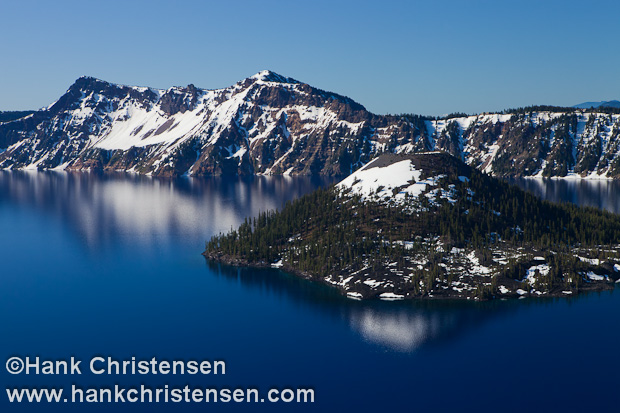
Last month my wife and I got a chance to visit Crater Lake National Park in southern Oregon. I had been several times before, but never armed with the digital equipment of today. Although I knew there would still be snow in July, I was surprised at how much was still there.
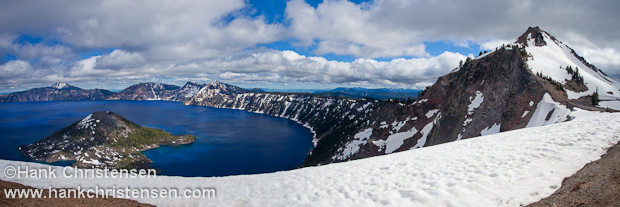
Snow was several feet deep in the forest, and drifts up to 10 feet deep still had the eastern rim road closed for the foreseeable future. In fact, it even snowed on us while we were there – something I was certainly not expecting in July. Thankfully I have a sensible wife who had booked us into a cabin – it saved us from camping in the mud between the snow drifts that covered the camp ground! And the snow really does add to the scenery.
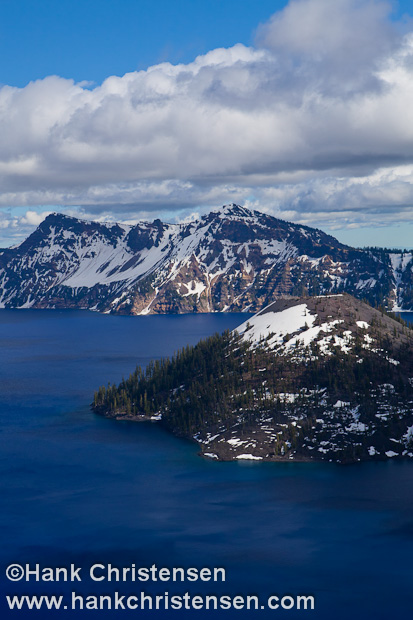
At night, the temperature dropped below freezing, and the wind picked up. While most sane people were in the lodge enjoying an after dinner drink around the fire, I was standing at the rim freezing while waiting for the sun to set. Luckily I got some nice colors that made the temporary discomfort worthwhile.
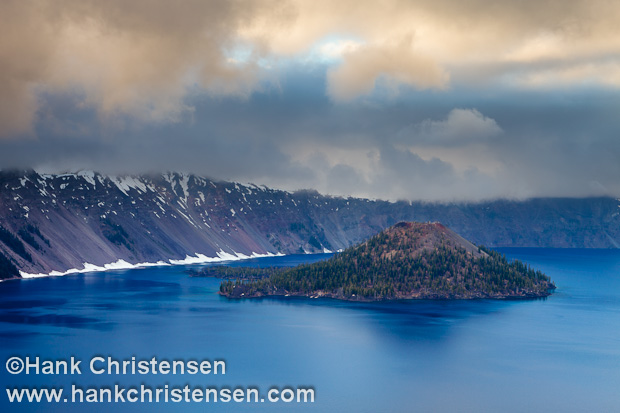
Crater Lake is most famous for its amazingly deep blue color. This color comes from the clarity of the water (the lake water comes only from rain and snow melt) and depth of the lake (over 1900 feet deep). Blue is the last color of the spectrum to be absorbed as light passes through water. It is this intense blue that is reflected up from the depths of the lake. In fact, Crater Lake is the deepest lake in the United States and one of the clearest in the entire world.
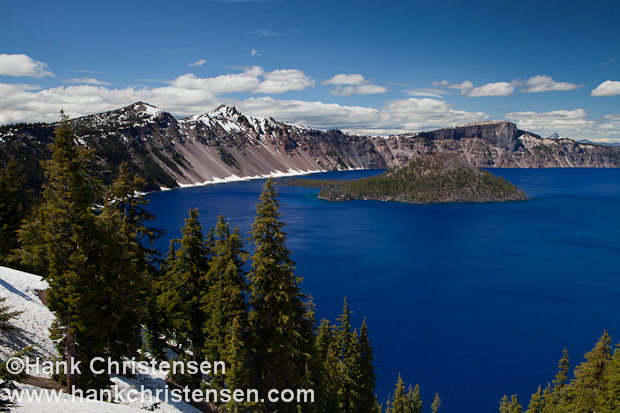
It was a great trip, and inspired us to go back for some hiking when there is less snow. It might also be fun to do a multi-day cross-country ski trip around the rim. In spite of the weather (or maybe because of it), it was a pleasure to see Oregon’s only National Park. See the entire Crater Lake National Park gallery.
